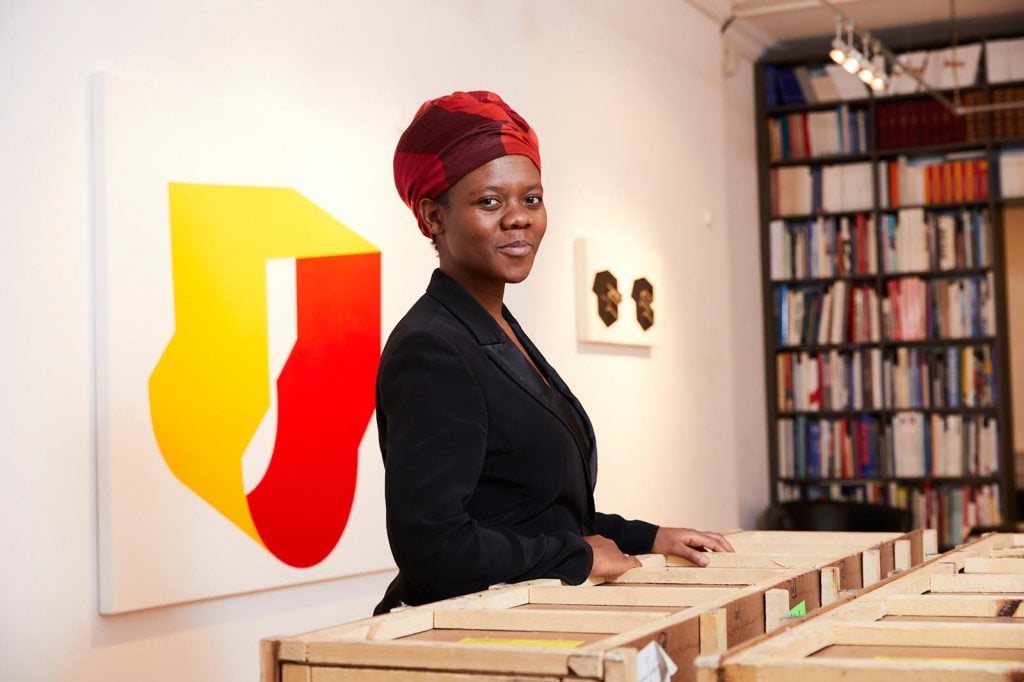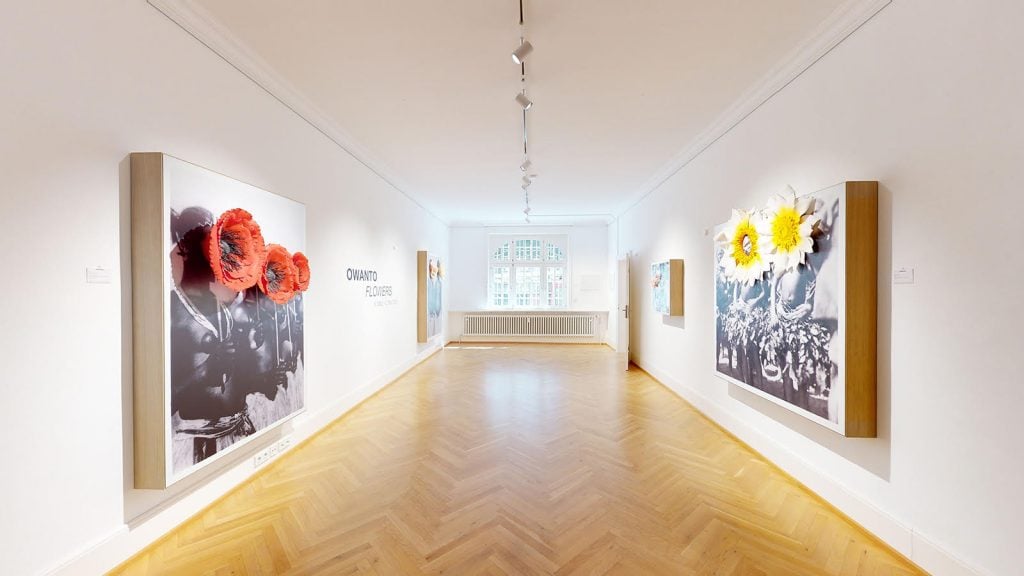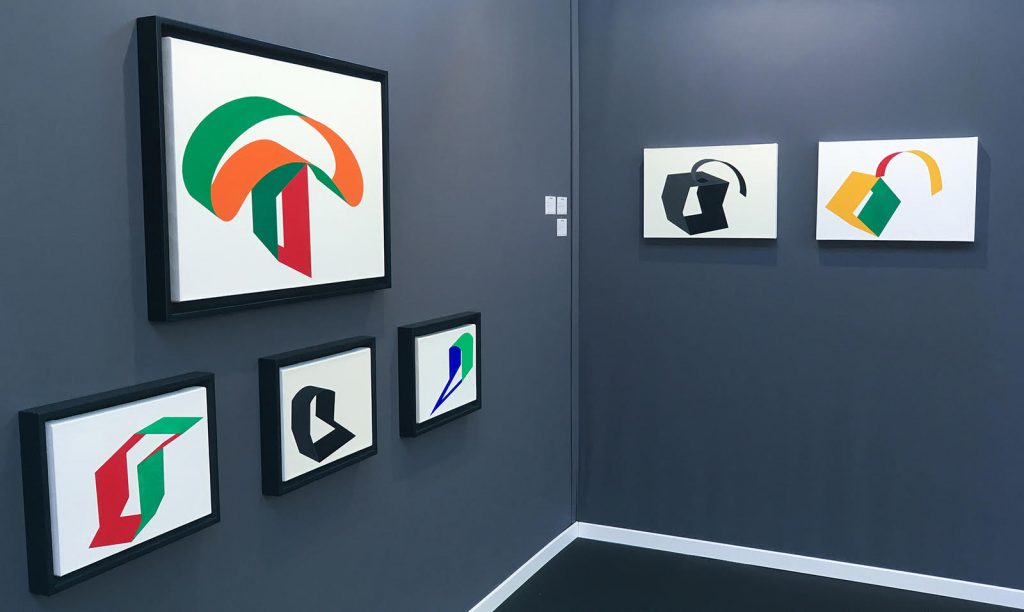Frankfurt Dealer Sakhile Matlhare on How Her Training as a Sociologist Informed the Way She Built Her Gallery


Artnet Gallery Network

Sakhile Matlhare, the co-founder of Frankfurt exhibition space Sakhile&Me, considers herself equal parts educator and gallerist. After earning a PhD in sociology at Northwestern in Chicago, Matlhare decided she wanted to create a space to offer a sustainable platform to artists of the African diaspora. She founded Sakhile&Me with Daniel Hagemeier in 2018.
Since the space’s inception, a collaborative approach has been key. Rather than representing a roster of artists, Sakhile&Me has aimed to support a broad network of creators and researchers by investing in solo and small group exhibitions not only at their own space, but also on the African continent and abroad through art fairs and educational workshops.
We caught up with Matlhare about the future of the exhibition space and the artists she thinks you should keep an eye on.
Sakhile&Me does not have a conventional gallery model. Can you tell me a little bit about the gallery and its mission?
The gallery is inspired by my PhD research looking at the working relationship between artists and cultural producers such as art historians, curators, gallerists, or collectors. Considering ideas of invisible labor and genre, I intentionally focused on artists and cultural producers whose work is often referred to as “contemporary African art,” asking how artists position themselves in relation to this label, whether they ascribe to it or not, and if so, in what ways. I was invested in demonstrating how artists are not only producers of cultural objects, but also participate in knowledge production and circulation. And ultimately, working from this perspective, much of what we now do at the gallery involves identifying and articulating how art, education, and activism are connected.
How has the pandemic affected the gallery?
The physical space is crucial for the tactile and sensory experience of the art we present, which cannot be adequately substituted online. However, we understand the value of alternative viewing options, especially for those who were unable to visit us in person even before the pandemic. Most of the artists we work with are based outside Germany, as are their audiences and supporters. Virtual tours, online viewing rooms, and interactive webinars have nurtured a sense of community for many as likeminded people seek each other out to brainstorm, share resources, and consider more and perhaps different ways of working together, unfettered by physical boundaries.

Nnenna Okore, Inside Out. Courtesy of Nnenna Okore. Photograph by Sakhile&Me.
Who are a few of the artists that you believe deserve a larger platform?
We admire artists whose work has a strong historical or research component but who also approach the materials they employ with care and intention. Nnenna Okore, for example, who is well known for her delicate fiber sculptures made from textiles like burlap or cheesecloth, draws inspiration from nature and highlights sustainability and the fragile but self-renewing properties of our environment.
Osi Audu meticulously paints minimalist geometric forms that reference West African headdresses, masks, and sculptures to explore the tangible and intangible parts of the self, understanding the head as a signifier of self-consciousness and drawing from the Yoruba philosophy of Ori inu (“the inside head”) and Ori ode (“the outer head“).
Owanto’s “Flowers” series showcases enlarged archival images of a female genital mutilation/cutting (FGM/C) ceremony, the violation in the image veiled with delicate hand-crafted cold porcelain flowers, bringing to light the complex and contested issues surrounding FGM/C and thus opening up a very traumatic and difficult conversation.
These three are amongst the longest practicing artists with whom we are currently working and their works independently illustrate how art practice can enable and facilitate introspection, education, and advocacy.
What about younger artists to keep an eye on?
A few examples among our younger generation artists include Adelaide Damoah, Kevin Demery, and Mbali Dhlamini, their work investigating the connection between their personal experiences and those of the communities they are part of. Adelaide Damoah works at the intersection of performance and painting, using her body as a paintbrush and boldly expressing her intersectional feminism while also considering her Ghanian heritage and contending with the tumultuous colonial history and relationship between Ghana and her birth country Great Britain.
Kevin Demery’s work is a meditation on living as a young Black person in the United States, combining elements the audience may associate with childhood, play, and abundance with those that suggest harshness, violence, and restriction. His art merges painting and drawing with sculpture and collage to direct attention to patterns of historical violence, surveillance, and childhood trauma.
Mbali Dhlamini is a visual researcher whose work explores the decolonization of contemporary African identity-making, often using symbolism and imagery she finds in archives as tools for investigating, learning, and un-learning, as well as shaping and potentially re-shaping what we know about different communities on the African continent and their respective knowledge systems.

Owanto, Flowers. Courtesy of Sakhile&Me. Photograph by Artland.
What are some projects you’re looking forward to?
Our first exhibition in 2021 will be a group show called “Gaabo Motho,” centered around the Setswana saying “Gaabo Motho go thebe phatswa,” which relates to the sayings “there is no place like home” or “home is where the heart is.” It emphasizes a sense of acceptance and nurturing from or by the place or the people close to us and it invites the audience to meditate on what makes a home or indeed a sense of belonging, sensitizing the viewer to think through the idea of “my/our place,” “my/our body,” and/or “my/our home.” It is one of two exhibitions planned for next year that will allow us to combine paintings and drawings with video and light works for the first time, which we are really looking forward to.
What is one exhibition that influenced your work as a gallerist and your own approach to exhibitions?
One of my favorite exhibitions took place when Northwestern University invited Wangechi Mutu to present “A Fantastic Journey” at the Block Museum in 2014. She had created intricate fantastical landscapes featuring giant female forms looking directly at the viewer as though to ask, “What are you doing in my space?” Alongside the collage works was an installation of balls hanging from the ceiling filled with the artist’s junk mail. The walls were plastered with women’s lingerie molded into an obscure growth infesting the corners of the viewing rooms, and a video featuring musical performer Santigold showed her as the pro-/antagonist floating in the sky consuming (in)animate objects while spouting sooty smoke. It was an exhibition that not only captured the imagination but grounded the feeling of awe in reality, suggesting an inward look at the things we take for granted and mixing the grotesque with delicate and sensual elements.
As part of the exhibition programming, the university hosted a panel on Afrofuturism. Before the panel started, I recall seeing a white couple who were commenting on the different hairstyles and outfits in the auditorium while taking photos of the other audience members. I cringed at the scene, which appeared to me as an example of the non-critical consumption of Black bodies and creative expression. It became the backdrop to the question of what it means to be a Black person working in the creative field, but it also led me to ask myself in what ways I could shift from being a bystander to participating inside and outside the arts while testing out different ways to interrupt expectations of artists’ contributions in the museum, the art gallery, and other spaces.

Installation of works by Osi Audu at AKAA Paris. Courtesy of Sakhile&Me.
What are some of the major misconceptions about art from Africa and its diaspora?
Sakhile&Me works with engaging artists and those interested in their work on an interactive level and the research the gallery concept draws from highlights that specificity is key and that we would benefit from moving away from questions that insist on coining artists’ work as “African” rather than exploring what the artists are actually doing in their work—with room for self-determination, expansiveness, and even frivolous ambiguity. We highlight the often unseen efforts that go on alongside the making of exhibitions and emphasize the importance of “contemporary African art” in the context of the sprawling variations in how artists work and what they prioritize. Ultimately, our work also aims to challenge stereotypes, which seek to locate easily identifiable patterns or symbols of what art and knowledge produced by and about people of African descent should look like or what the potential of such work can be.
If you weren’t working in this job, what job would you be doing instead?
I believe I would work as an independent curator, organizing exhibitions in different spaces, advising acquisition committees in both public and private collections, and aiding facilitators and researchers with grant-giving organizations that support artists with resources, residency stipends, and financial literacy.